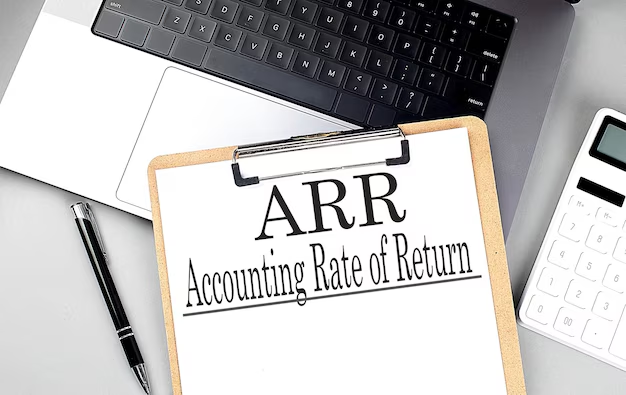Understanding Your 401(k) Contribution: How Much Can You Really Put Aside?
Navigating the financial waters of 401(k) contributions can seem like a daunting task, but understanding how much you can contribute to your account is a significant step towards ensuring a robust retirement plan. Whether you're starting your first job or you're a seasoned professional rechecking your retirement strategy, gaining clarity on your 401(k) contributions can enhance your financial planning.
Why Contribute to a 401(k)?
Investing in a 401(k) offers a structured way to plan for your retirement while benefiting from tax advantages. Here’s why contributing to a 401(k) is a smart move for many:
- Tax Benefits: Contributions are typically made pre-tax, reducing your taxable income for the year.
- Employer Matches: Many employers offer to match contributions, essentially offering free money to boost your retirement savings.
- Compounding Growth: The sooner you start investing, the longer your money has to grow through compound interest.
Understanding these advantages lays the groundwork for appreciating the importance of maximizing your contributions.
How Much Can You Contribute to Your 401(k)?
Contribution Limits for 2023
In 2023, the IRS allows employees to contribute up to $22,500 to their 401(k) plans. Knowing this limit helps you plan your contributions effectively throughout the year.
Catch-Up Contributions for Older Workers
If you are aged 50 or older, you're eligible for additional contributions known as "catch-up" contributions. For 2023, the catch-up contribution limit is $7,500, making it possible to contribute a total of $30,000 for those in this age bracket.
Employer Contributions
Beyond your personal contributions, employers can also contribute to your 401(k). Combined, total contributions between employee and employer can't exceed $66,000, or $73,500 for those over 50, inclusive of catch-up contributions.
Factors That Affect 401(k) Contributions
Several elements can impact how much you can or should contribute to your 401(k):
Salary Deferral Agreements
Your employer sets up salary deferral agreements, allowing a portion of your salary to be deferred into your 401(k). Make sure you understand your company’s policies on contribution changes, typically requiring notice or open enrollment period adjustments.
Income Limits
For highly compensated employees, the IRS imposes additional non-discrimination tests to ensure that 401(k) plans benefit all employees fairly. Be sure to check with your HR department if these rules apply to you.
Personal Financial Goals
Your individual financial situation and goals will inform how much you decide to contribute. Consider factors such as other debt obligations, emergency savings, and desired retirement lifestyle.
Maximizing Your 401(k) Contributions
Assessing Financial Priorities
Before maximizing retirement contributions, ensure other financial bases are covered. Paying off high-interest debt or saving for emergencies are vital steps that should accompany retirement planning.
Budgeting and Tracking
Implement a budget that accounts for regular retirement contributions. Keep track of your contributions versus limits throughout the year to avoid exceeding caps.
Increasing Contributions Over Time
- Annual Raises: Allocate a portion of any pay increase towards your retirement contributions.
- Goal Setting: Set progressive goals for increasing contributions as your salary grows and circumstances change.
Beyond Basics: Advanced 401(k) Strategies
Roth 401(k) Contributions
Consider contributing to a Roth 401(k) if your employer offers it. Contributions are made with after-tax dollars, but withdrawals in retirement are tax-free under certain conditions.
Diversification in Investment Choices
Review and adjust your investment selections within your 401(k) to ensure they're aligned with your risk tolerance and retirement timeline.
- Target-Date Funds: These funds automatically adjust asset allocation based on your expected retirement year.
- Custom Portfolio: Craft a blend of equity, fixed-income, and other investment vehicles based on your comfort with risk and return expectations.
Leveraging Employer Match
Tip: Aim to at least contribute enough to get the full employer match. Not doing so is akin to leaving free money on the table.
Potential Pitfalls and Considerations
Early Withdrawals
While a 401(k) plan offers a valuable nest egg for retirement, tapping into these funds early can yield penalties and taxes that deplete your savings.
- Hardship Withdrawals: Generally permitted for immediate financial needs, but they come with immediate tax liabilities and potential early withdrawal penalties.
Loan Options
Some 401(k) plans allow loans. However, unpaid loans can become taxable distributions if job termination occurs or if repayments aren’t made on time. Consider the ramifications carefully.
Key Takeaway: While borrowing from your 401(k) should generally be a last resort, it can be strategic for addressing short-term financial needs. Always weigh this against the long-term impact on your retirement savings.
Creating a Balanced Retirement Strategy
Integrating Other Retirement Accounts
Aside from a 401(k), other retirement saving vehicles include IRAs, HSAs, and personal brokerage accounts. Diversifying your retirement savings strategies can offer both tax benefits and investment flexibility.
Periodic Reviews and Adjustments
Routinely review your 401(k) plan and other investments to adjust your approaches based on financial changes, market conditions, and personal goals. Consult a financial planner if needed to help evaluate and optimize retirement strategies.
📌 Summary of Practical Tips for 401(k) Contributions
- Know Your Limits: Ensure annual contributions don’t exceed $22,500 or $30,000 if you're over 50.
- Capitalize on Match: Always contribute enough to receive the full employer match.
- Be Proactive With Raises: Increase contribution percentages with salary raises.
- Consider Roth Options: Explore after-tax contributions for tax-free retirement withdrawals.
- Review Regularly: Evaluate and adjust your contribution strategy regularly.
- Avoid Penalties: Steer clear of early withdrawals and unpaid loans to prevent penalties.
🎯 Key Insight
Maximizing your 401(k) not only means contributing the maximum allowable but also entails adopting sound financial habits and strategies. These can include optimizing employer matches, monitoring investment choices, and staying informed about changes in tax laws impacting your retirement savings. With deliberate planning and periodic reviews, your 401(k) can effectively lead to financial security in retirement.
By understanding these elements and integrating them into your financial strategy, you’re empowered to make informed decisions that support a robust retirement plan.
